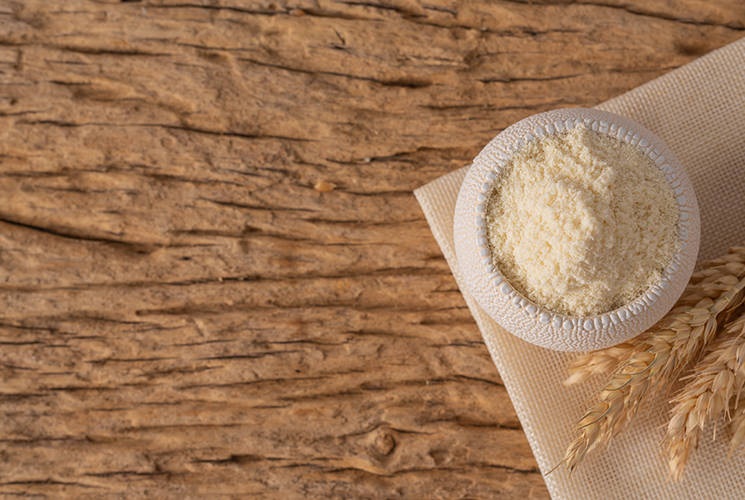The introduction of modified starch revolutionized the food industry. They are easy to process and offer exceptional benefits when used in the technical food industry. It performs the same as any native starch, however, it has many augmented benefits, making it more suited for industrial food uses. You can easily buy modified starch from modified starch manufacturers in India.
Modified starch is treated starch. It has been treated chemically, physically, or enzymatically for getting the augmented benefits of their new properties. Modified starch doesn’t mean genetically modified starch. It is simply treated in varying ways to enhance its ability to retain the structure and maintain texture.
Modified starch is safe for use and is tested by the EU for guaranteed safety. Modified starch is often labeled as Modified starch or E1404 in the list of ingredients. Let’s deepen our understanding of modified starch by analyzing the difference between modified and native starch.
Difference between modified and natural starch
To get a clear understanding, natural starch is derived from plants. It is made of long chains of glucose molecules high in energy. Natural starch is usually derived from wheat, corn, maize, potatoes, and cassava.
Modified starch is prepared by altering the chemical properties of natural starch. It is treated either physically, chemically, or through enzymes to get desired properties of starch. Treatments like esterification, cross-linking, etherification, and oxidation are practiced on natural starch to get modified starch.
Modified starch contains the same proportion of glucose as natural starch, however, their molecular arrangement differs giving them more enhanced properties. The peculiar properties of modified starch that makes it immensely popular in the food industry include low viscosity, enhanced binding properties, shelf life and appearance, resistance to overcooking, reduced swelling, and loss of viscosity.
Modified starch is often used as a replacement or as a complement to natural starch in varying recipes. It is odorless, and tasteless and creates a transparent gel-like consistency making it suitable for versatile food dishes.
Uses of Modified Starch
● Modified starch as a thickener
Modified starch is used as a thickening agent to thicken sauces, gravies, pie fillings, stews, casseroles, dips, and fillings. Natural starch cannot be exposed to heat continuously. Modified starch, on the other hand, is resistant to heat, harsh cooking conditions, and heat-induced acidity. Hence, modified starch is a better alternative to natural starch in the technical and food processing industry.
Modified starch should be used when sauces and gravies need to be stored for a long. It has enhanced freeze-thaw stability, thereby, retaining the glossy smooth texture of food without giving out water.
● Modified starch as a texturizer
The biggest challenge in the food industry is to preserve the structure and texture of food products. Modified starch does that without creating a disturbance in texture. It is extensively used in the instant food industry where the products go through extreme temperature changes. With its stabilizing property, modified starch retains the texture of a product, thereby ranking your products higher in the market.
● Modified starch as an appearance improver
Modified starch is used in the food industry for its transparent gel-like consistency. It can easily be combined with food colors to get desired color and texture. Moreover, appearance is everything when we talk about food. Modified starch makes pie fillings, bread, cakes, and crispy deep-fried food look fresh and as texturized as it should be.
● Modified starch as an emulsifier
Emulsifiers are commonly used in packaged foods and drinks that allow the effortless combination of complex molecules. Modified starch is often used in mayonnaise, bread, whipping creams, frozen desserts, biscuits, cakes, creamers, instant formulations, processed meats, and seafood for retaining their original taste, quality, and consistency.
● Modified starch as a stabilizer
Stability is perhaps the most important quality of food that will keep it fresh and retain its consistency. Modified starch acts as a stabilizing agent and stabilizes the food when transmitted between extreme temperature changes. It enhances the freeze-thaw stability of the product and offers viscosity stability to it.
Common applications of Modified starch
● The most prolific characteristic of modified starch is that it enhances the shelf life of processed foods without changing the flavor or appearance of the product.
● It is used in bakery products to get fresh bread, muffins, and cakes that shall stay moist and appealing for a longer duration.
● Modified starch enhances the moisture in meat products like ham and chicken, thereby keeping them juicy and tender for a long.
● Modified starch offers a beautiful texture to food products and can be used in versatile ways like deep frying, pie fillings, and puddings.
● It is used in dairy products like cheese, mayonnaise, whipping cream, and icecreams for beautiful viscosity and consistency.
● Modified starch is the most common ingredient used in almost all sorts of packaged and processed foods.
Summing up, there are no health adversities linked with modified starch. They are easy on the gut and easily absorbed in our bodies without causing any long-term effects. Modified starch of the finest qualities can help you build a brand of food products that should stay ahead in the supermarket shelves. The science of food is an interesting one and modified starch is one of the finest scientific inventions for the love of our food.




